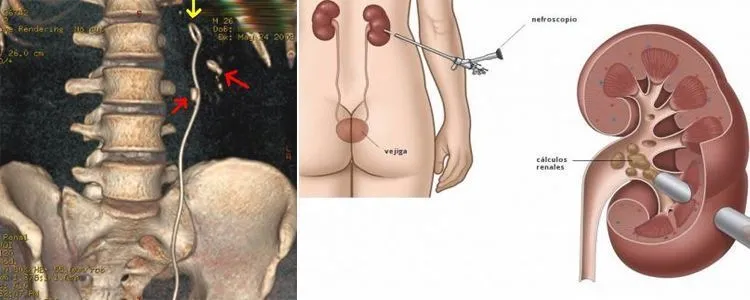Many foods considered healthy contain oxalic acid. Leafy greens and other plant foods are very popular among those who practice a healthy life.
By contrast, a large number of these products contain oxalic acid, considered by many to be an antinutrient.
In this article we wanted to gather all the scientific reports to evaluate the health effects of oxalates and derivatives when we introduce them into our body.
Table of Contents
What is oxalate or oxalic acid?
The oxalic acid It is a compound of organic origin that we can find, in a natural way, in a multitude of plants and vegetables.
Among them, we include green leafy vegetables, some fruits, cocoa, seeds as nuts and others, etc.
When they bind to other minerals, as is often the case in plants, they form the well-known oxalates. For example, one of the most well-known forms of union is the calcium oxalate.
Our body is able to produce this element autonomously or, as in most cases, obtain it through food.
For example, vitamin C can be broken down into oxalate once it undergoes the metabolization process.
In our digestive system, the most frequent junctions of oxalates (calcium and iron) occur more frequently in the colon, and less frequently in the kidneys and urinary tract.
In most cases, mineral-bound and insoluble oxalic acids are eliminated through urine or feces. However, other times they form in kidneys and urinary tract those known as kidney stones or kidney stones, which are nothing more than deposits of oxalates.

Oxalate May Reduce Mineral Absorption
Therefore, this element acts as an insolubilizing complexing agent, reducing the ability of many minerals to be absorbed by the body.
When a mineral before reaching the intestine binds with oxalic acid, it can form a precipitate that prevents its absorption.
A well-known case is that of spinach, which contains a high concentration of calcium (but not such high iron) and many oxalates, so there are many difficulties for such calcium to be physiologically active. [Effect on calcium absorption]
The same thing also happens, in parallel, with fiber, which can prevent the assimilation of certain minerals. In addition, binding with oxalates does not happen with all minerals. Only with some specific ones.
People who tend to suffer from this type of inconvenience due to oxalic acid, it is advisable to adjust their diet to reduce the intake of foods with oxalates.
The recommendations established by urologist specialists is a maximum of 60 mg per day of oxalate, something that we can calculate based on the concentration in oxalic acid of each of the elements. [Kidney Stone Prevention Essay]
Can oxalic acid cause any disease?
Scientific trials have ruled out the popular belief that oxalic acid is linked to the onset of autism or chronic vaginal pain (vulvodynia). [View Report]
However, the improvement of the diet, with greater increase in active calcium and not precipitated by oxalates, along with iron, led to improvements in the symptoms of several diseases.
Basically, what the scientific community confirms is that oxalic acid is not the origin of the problem, but it can aggravate the symptoms.
Foods with oxalates are considered healthy

Eliminate food from the diet with oxalates it means reducing the intake of foods considered healthy. Most of them contain important antioxidants, fiber and are low in saturated fats.
Therefore, it is not so simple to eliminate this type of food to reduce the probability of suffering from kidney stones, since we can suffer other more severe diseases.
Some of these foods are as follows:
Seeds and grains:
- Wheat bran, wheat germ and barley
- Corn grits
- Corn flour
- Intergral bread
Fruits:
- Dried apricots
- Red currants, figs and rhubarb
- Kiwi
Vegetables:
- Collard greens, leeks, spinach
- Beans
- Eggplant
- Beetroot
- Chard, endives, parsley and turnip
- Tomato sauce
Protein foods:
- Beans stewed with tomato sauce
- Butter (almonds, walnuts, cashews, hazelnuts, etc.)
- Miso
- Beans
Desserts:
- Fruit cake
- Chocolate
- Jams
Beverages:
- Chocolate drink
- Soy milk
- Iced teas
Other foods:
- Sesame seeds and tahini (paste made from sesame seed)
- Poppy seeds
A part of the oxalates we consume can be degraded by our bacteria present in the gut.
Specifically, the bacterium Oxalobacter formigenes it is able to degrade it to use it as a source of energy, something very positive for us. [See study]
However, not all people have the same microbial flora or the same number of colonies, so it is likely that people who suffer from kidney stones due to oxalic acid and oxalate aggregates do not have an adequate number of Oxalobacter formigenes.
Additional tips
Finally, we teach you some tips on how to start a low-oxalate diet:
Reduce the oxalate content to a maximum of 50 mg per day.
Boil vegetables rich in oxalate: we can reduce the oxalic acid content between 30% and 90%, depending on the vegetable.
Drink plenty of water: with this we increase the dilution of these insoluble compounds and their elimination in the urine.
Find a source of calcium that is easy to assimilate
Get enough calcium: we need between 800 to 1,200 mg of calcium per day. Here you have the foods with more calcium.
